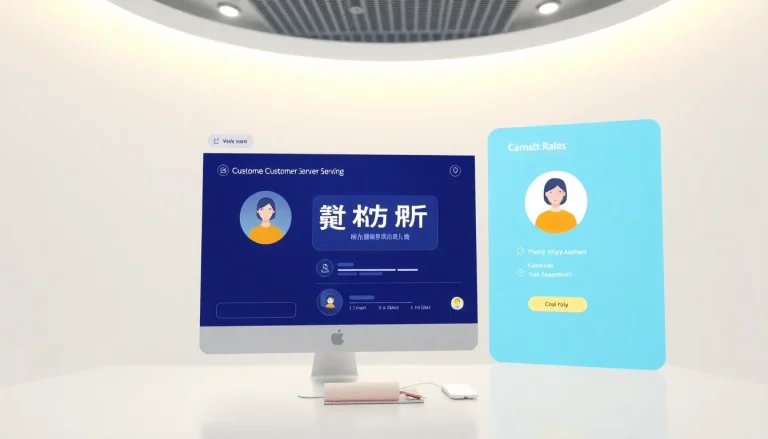
In today’s hyper-competitive marketplace, competitive intelligence has evolved from being an optional business strategy to an essential component of strategic planning. Companies of all sizes are recognizing the need to harness insights about their competitors, market trends, and customer preferences to remain relevant and excel in their respective industries. This comprehensive guide will delve deep into competitive intelligence, showcasing its significance, key components, top companies in the field, best practices for implementation, and future trends that businesses should be aware of.
Understanding Competitive Intelligence
What is Competitive Intelligence?
Competitive intelligence (CI) refers to the systematic collection, analysis, and use of information about a business’s competitors and the market environment. It is not merely about gathering intelligence; it’s a strategic process involving the transformation of data into actionable insights. CI helps businesses understand the competitive landscape, identify threats, and seize opportunities. This can involve various forms of research, such as:
- Market Analysis
- Competitor Profiling
- SWOT Analysis (Strengths, Weaknesses, Opportunities, Threats)
- Customer Analysis
Why is Competitive Intelligence Important?
In an era where change is the only constant, the relevance of competitive intelligence cannot be overstated. Here are several reasons why CI is vital for companies:
- Informed Decision-Making: CI equips business leaders with data necessary for making informed decisions, reducing risks associated with market entry or product launches.
- Enhanced Strategic Planning: By understanding competitors’ strengths and weaknesses, organizations can tailor their strategies for competitive advantage.
- Market Adaptability: CI helps businesses renegotiate their positions in the market, enabling them to respond proactively to market changes.
- Innovation Drive: Insights into competitor offerings and market trends can inspire innovation and new product development.
Key Components of Competitive Intelligence
The framework of competitive intelligence is built on several key components, which include:
- Data Collection: Gathering data from various sources, including public records, media outlets, industry reports, and social media.
- Data Analysis: Processing the gathered data to extract meaningful insights that inform business strategy.
- Communication: Disseminating the analyzed information to stakeholders to ensure alignment and informed decision-making.
- Monitoring: Continuously evaluating market conditions and competitor activities to stay updated.
Leading Competitive Intelligence Companies
Top Features to Look for
When selecting a competitive intelligence company, organizations should prioritize certain features that can significantly enhance their CI efforts:
- Customizable Reports: The ability to generate tailored reports can help meet specific business needs.
- Real-Time Insights: Timely information about competitors’ strategies, especially in fast-moving industries, is crucial.
- User-Friendly Interface: A platform that is easy to navigate allows teams to leverage CI tools effectively.
- Comprehensive Data Sources: Access to a wide range of databases and analytical tools ensures depth in insights.
Case Studies from Successful Companies
Numerous companies have successfully implemented competitive intelligence strategies, giving them an edge over their competitors. Here are a few notable examples:
Case Study 1: Proactive Worldwide
Proactive Worldwide specializes in offering CI services to Fortune 1000 companies. Their approach includes on-ground research, workshops, and tailored CI training. One notable client demonstrated a 30% increase in customer engagement after utilizing insights from Proactive’s market analysis.
Case Study 2: Octopus Intelligence
Octopus Intelligence has made waves in the realm of market intelligence through its robust technology and services. One of their renowned projects involved a retail client who gained critical insights on competitor pricing strategies, allowing them to adjust their pricing model and improve sales by 25% over six months.
Industry-Specific Intelligence Solutions
Different industries require tailored CI strategies. For instance:
- Healthcare: CI focuses on drug development timelines, competitor market entry, and regulatory changes.
- Technology: Tech companies often seek intelligence on software trends, user preferences, and emerging technologies.
- Retail: Retailers analyze competitor promotions, consumer behavior trends, and regional sales performances.
Best Practices for Implementing Competitive Intelligence
Steps to Develop a Competitive Intelligence Strategy
Building an effective competitive intelligence strategy involves several steps:
- Define Objectives: Clearly state what you aim to achieve with competitive intelligence. This could include market entry strategies, product development insights, or customer retention plans.
- Identify Key Competitors: Determine which competitors are most relevant to your business and will provide insight into market dynamics.
- Establish Data Sources: Utilize a mix of primary and secondary research to gather comprehensive data on competitors.
- Analyze and Interpret Data: Use analytical tools to transform raw data into actionable insights that drive strategic decisions.
- Monitor Continuously: Establish a regular monitoring framework to keep track of changes in the competitive landscape.
Tools and Technologies for Data Analysis
The effectiveness of competitive intelligence heavily relies on the tools and technologies used for data collection and analysis. Some notable tools include:
- Google Alerts: This free tool enables users to get notifications about competitor mentions across the web.
- Crayon: A competitive intelligence platform that automates the tracking of competitors’ digital footprints.
- Kompyte: This software offers automated competitor tracking and analysis, all while providing insights to improve business strategies.
Connecting Competitive Intelligence with Business Goals
It is crucial that the insights derived from competitive intelligence align closely with business goals. Here’s how to make that connection:
- Regular Reviews: Conduct regular strategy sessions to ensure CI insights are integrated into overarching business objectives.
- Cross-Department Collaboration: Facilitate collaboration between marketing, sales, and product development teams to leverage CI insights more effectively.
- Celebrate Wins: Highlight how CI has positively impacted business outcomes to promote continued investment in CI efforts.
Evaluating and Choosing a Competitive Intelligence Provider
Criteria for Selection
Choosing the right competitive intelligence provider is critical for the effectiveness of CI efforts. Key criteria to consider include:
- Experience and Reputation: Consider the provider’s track record and testimonials from previous clients.
- Service Offering: Ensure the provider offers services aligned with your specific CI needs, including data collection, analysis, and reporting.
- Technical Proficiency: Look for providers using advanced analytical tools to gather and interpret data.
Cost Considerations
Budget is often a decisive factor when it comes to selecting a competitive intelligence provider. Consider these aspects:
- Type of Services: Customized services may cost more, but they can drive better results.
- Subscription vs. One-Time Payment: Assess which payment structure aligns better with your business model.
- Value vs. Cost: Weigh the potential returns on CI investment against costs to determine the right provider for your needs.
Interviews and Testimonials
In-depth discussions with potential CI providers can uncover essential details about their services. Here are some key questions to ask:
- What methodologies do you use for data collection and analysis?
- Can you provide examples or case studies that demonstrate your impact?
- How do you ensure data accuracy and reliability?
Future Trends in Competitive Intelligence
Emerging Technologies in the Market
As technology continues to evolve, so does the landscape of competitive intelligence. Notable emerging trends include:
- Artificial Intelligence: AI tools are automating data collection and analysis, providing faster and more accurate insights.
- Big Data Analytics: Companies are leveraging big data analytics to process vast amounts of data from diverse sources, resulting in richer insights.
- Social Listening Tools: These tools are becoming essential in tracking brand perception and sentiment analysis in real-time.
Impact of AI on Competitive Insights
AI’s integration into CI is transforming how organizations gather and analyze competitive insights:
- Predictive Analytics: AI algorithms can identify patterns and predict future trends, helping businesses stay ahead of the curve.
- Natural Language Processing: AI is enabling more effective data analysis through sentiment tracking and trend identification across multiple languages.
Adjusting Strategies for Changing Market Dynamics
As market dynamics evolve, businesses must remain agile and adaptable. Here are strategies to consider:
- Regular Strategy Reevaluation: Establish periodic reviews of CI strategies to assess relevance and effectiveness.
- Embrace Flexibility: Be prepared to alter strategies based on real-time competitive intelligence insights and market conditions.





